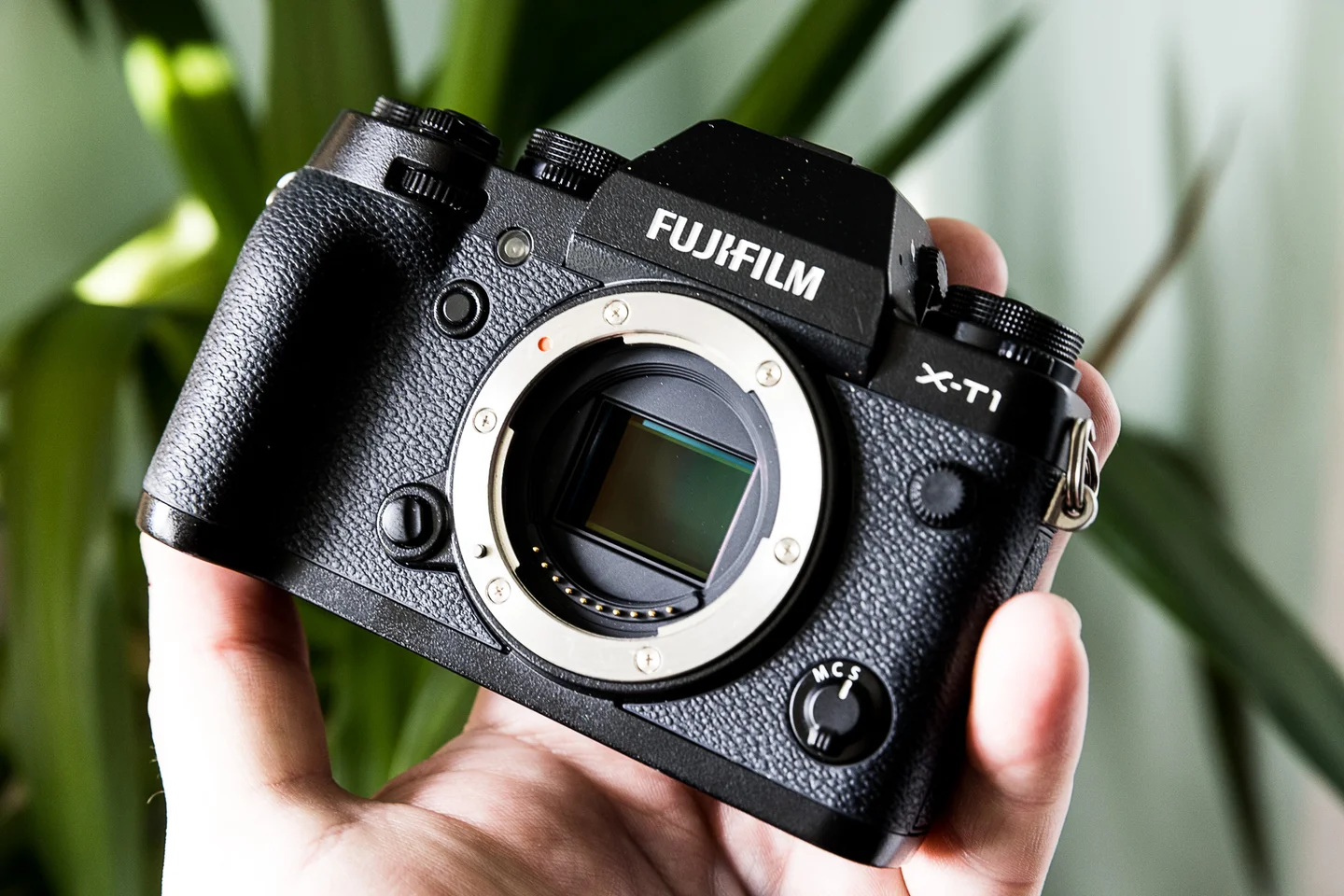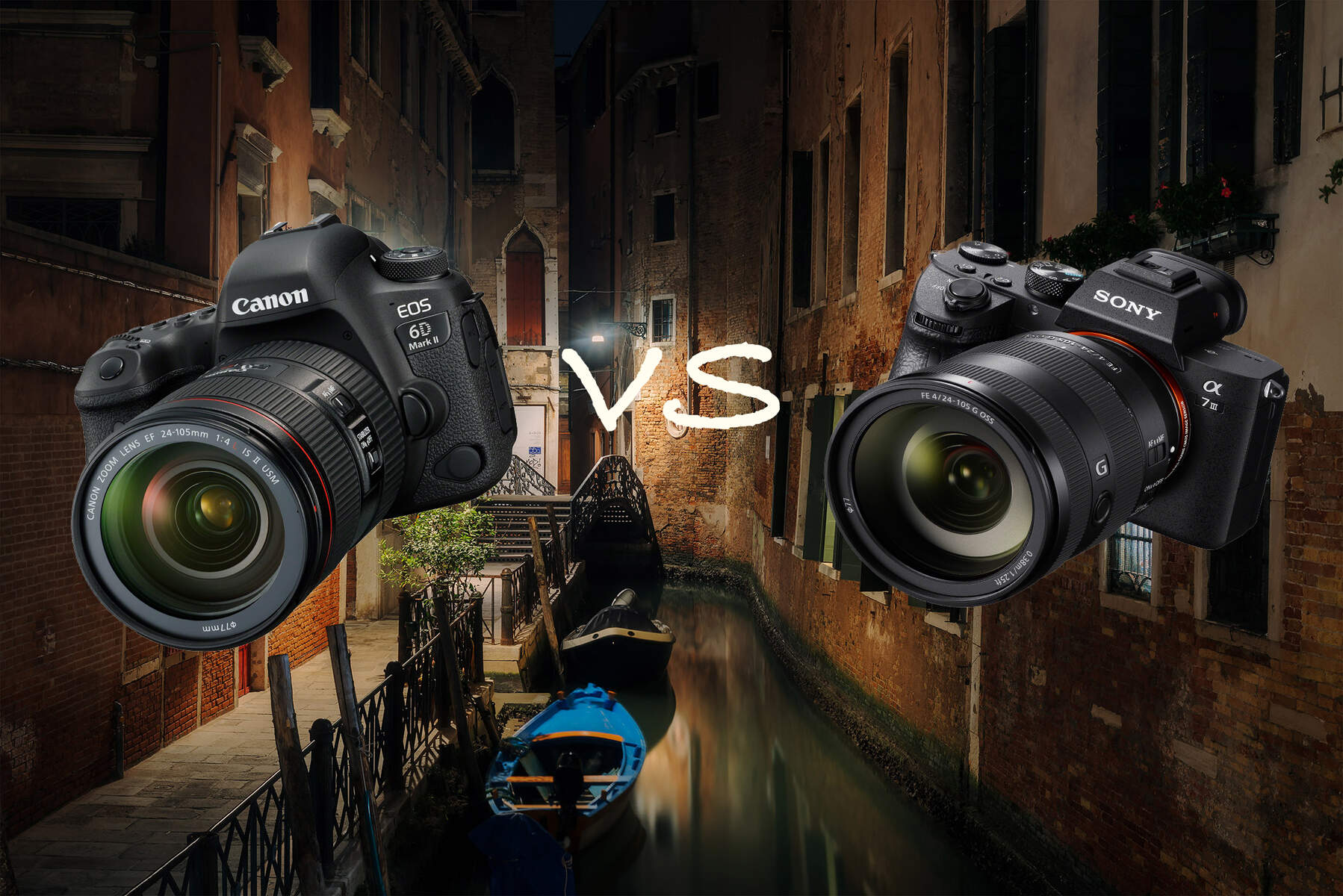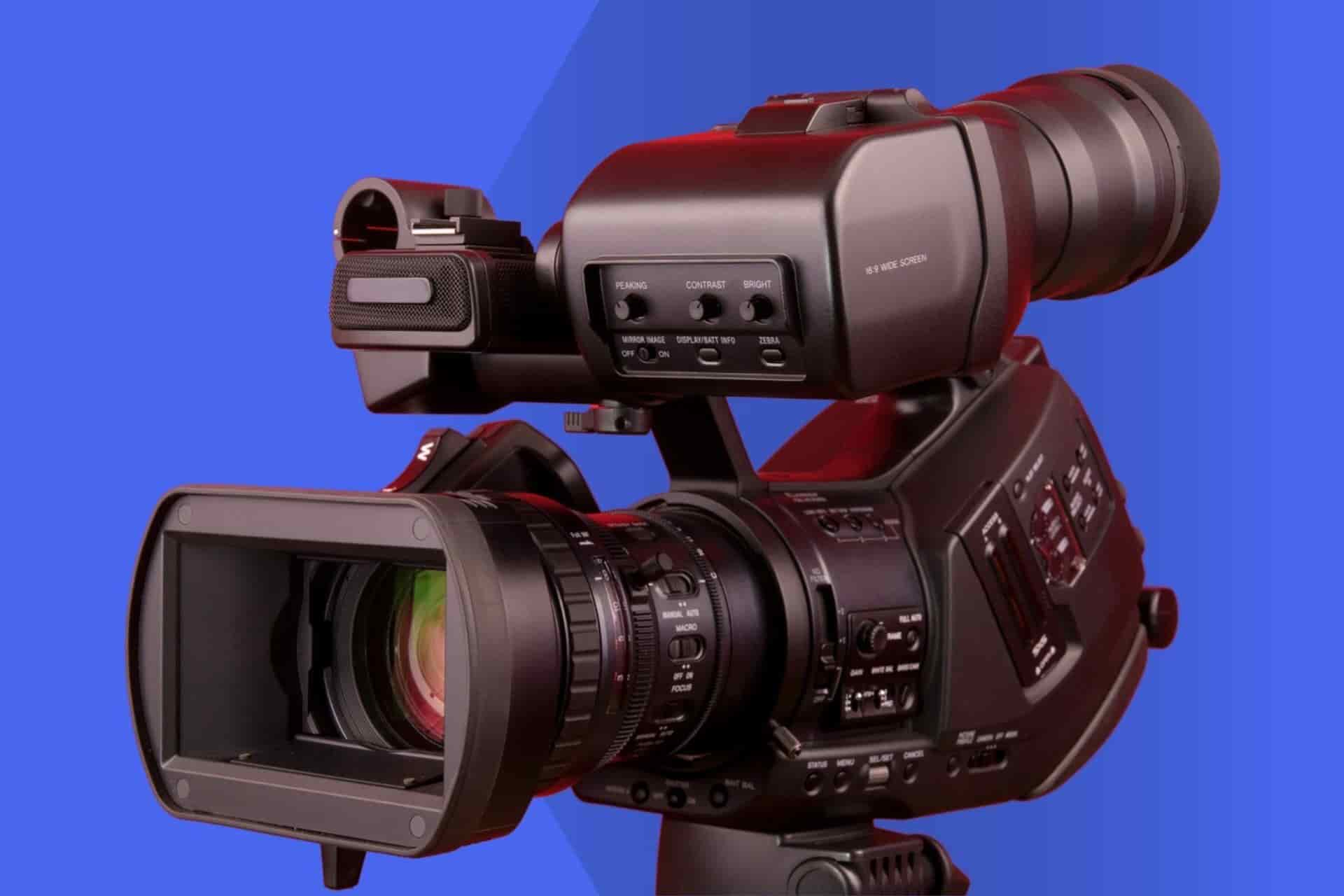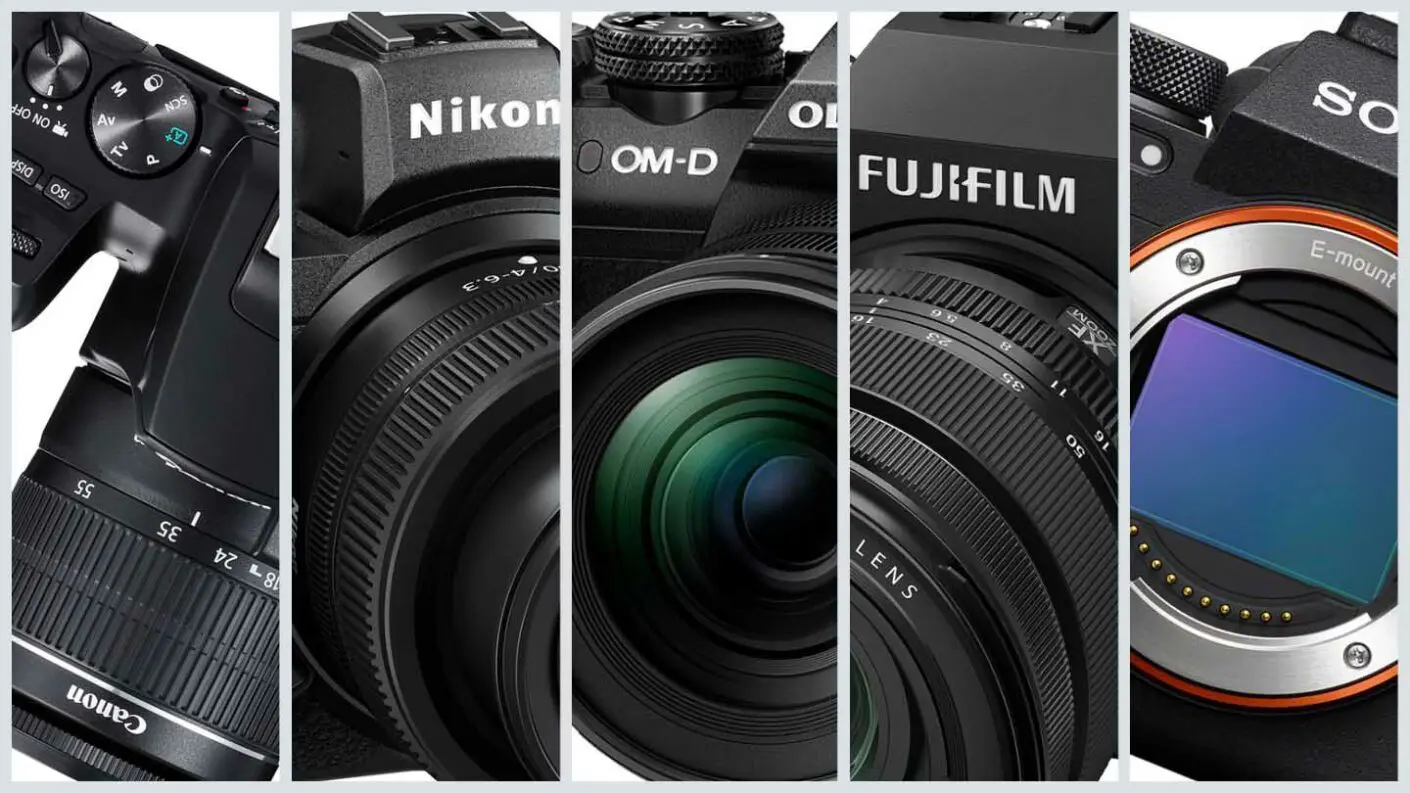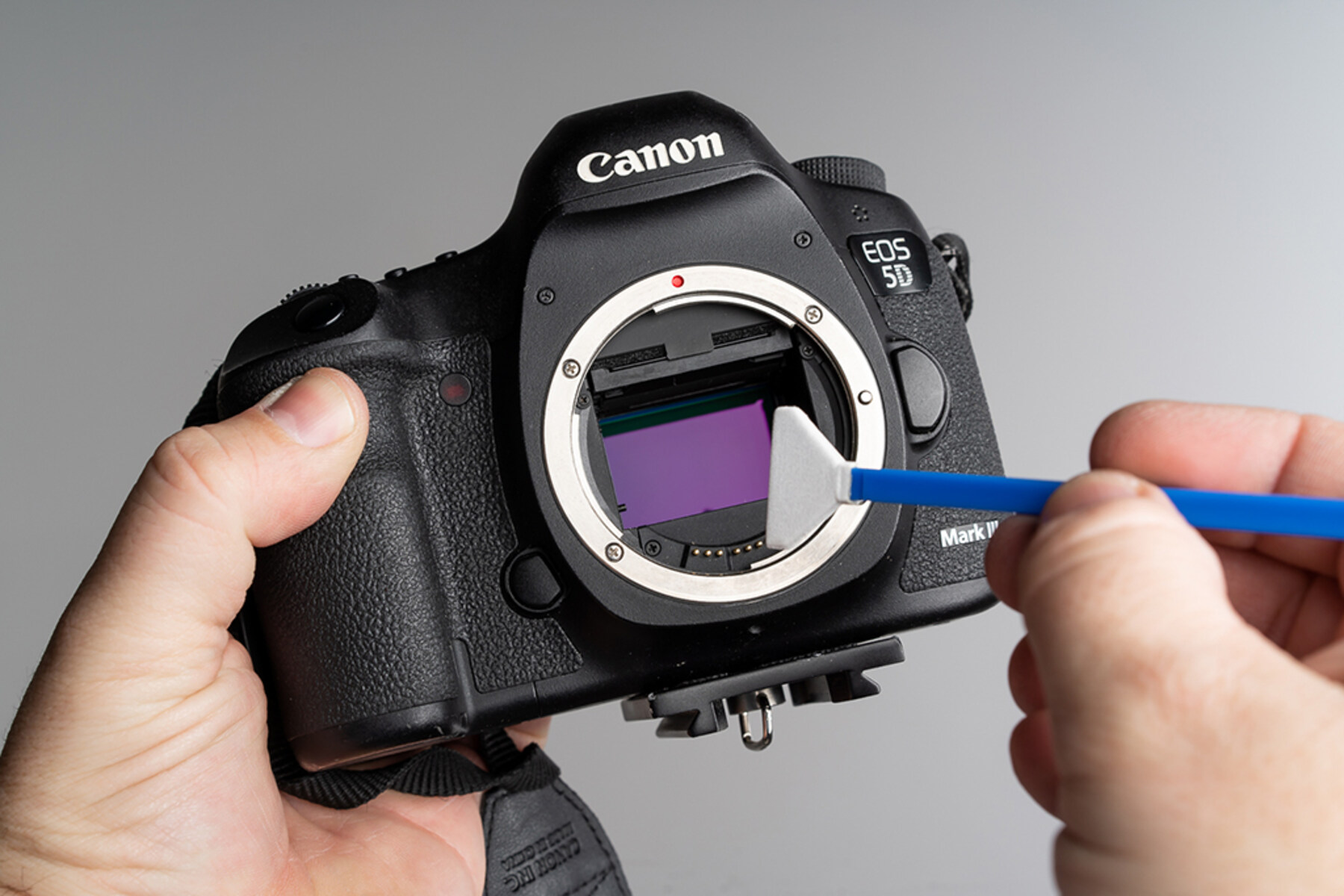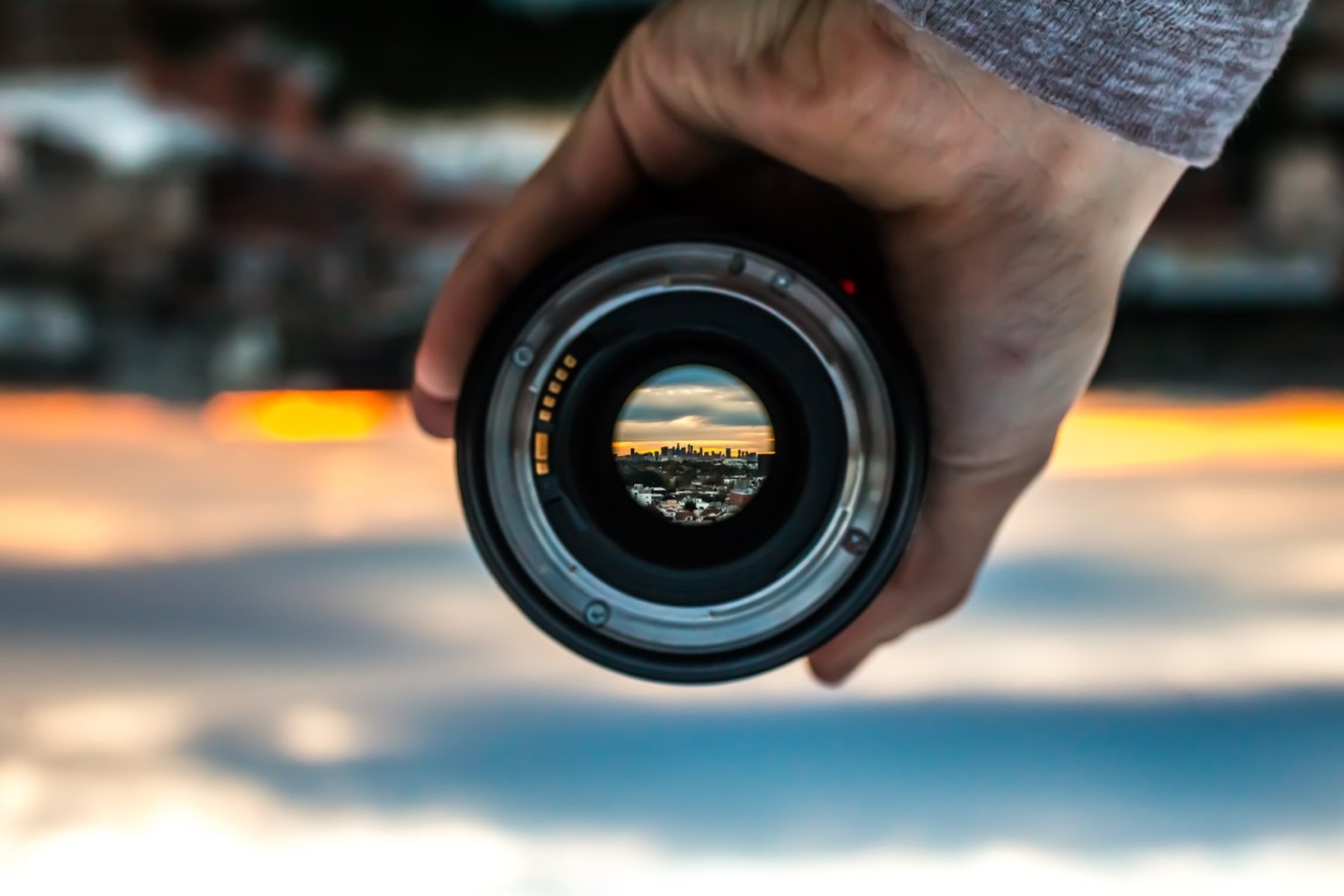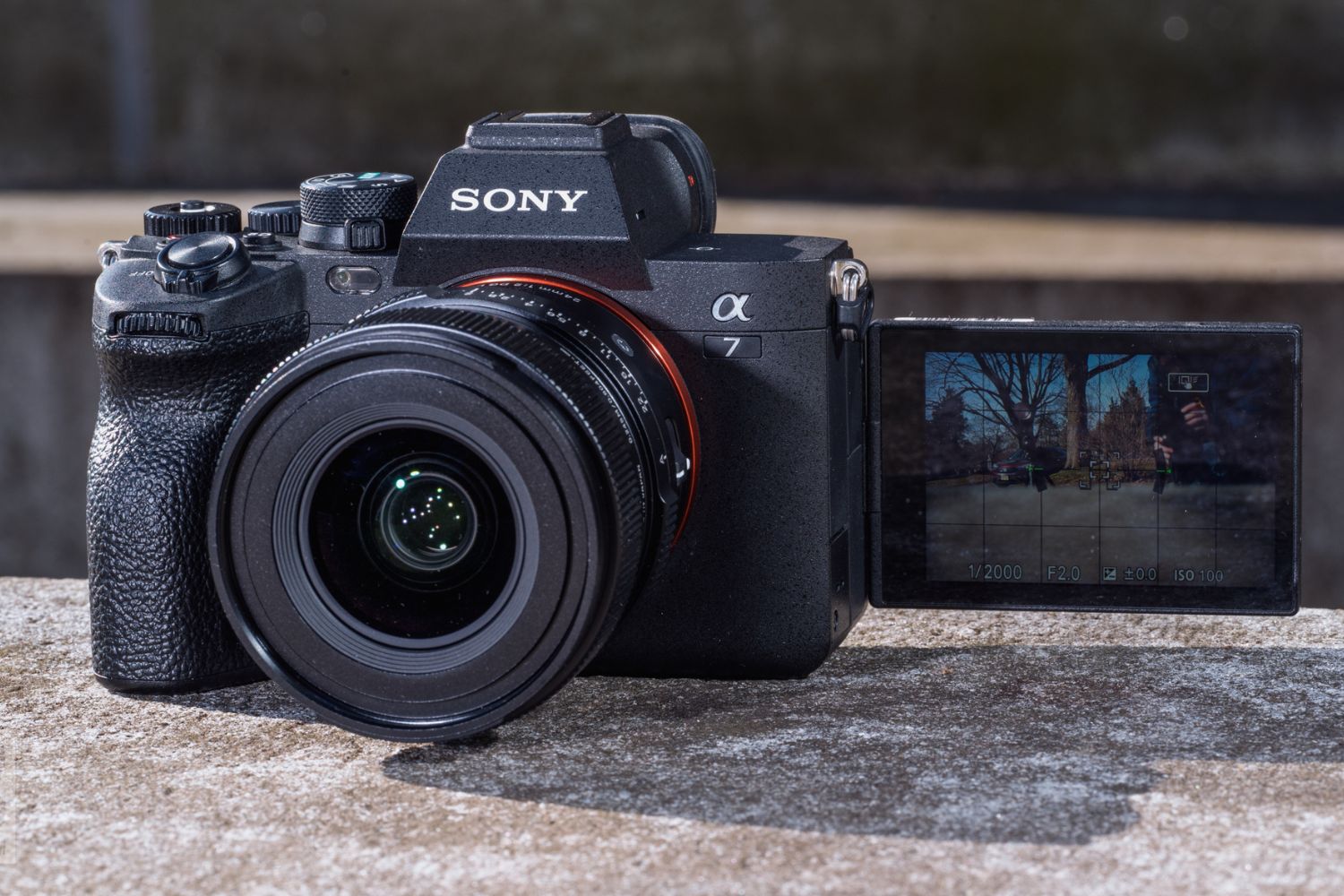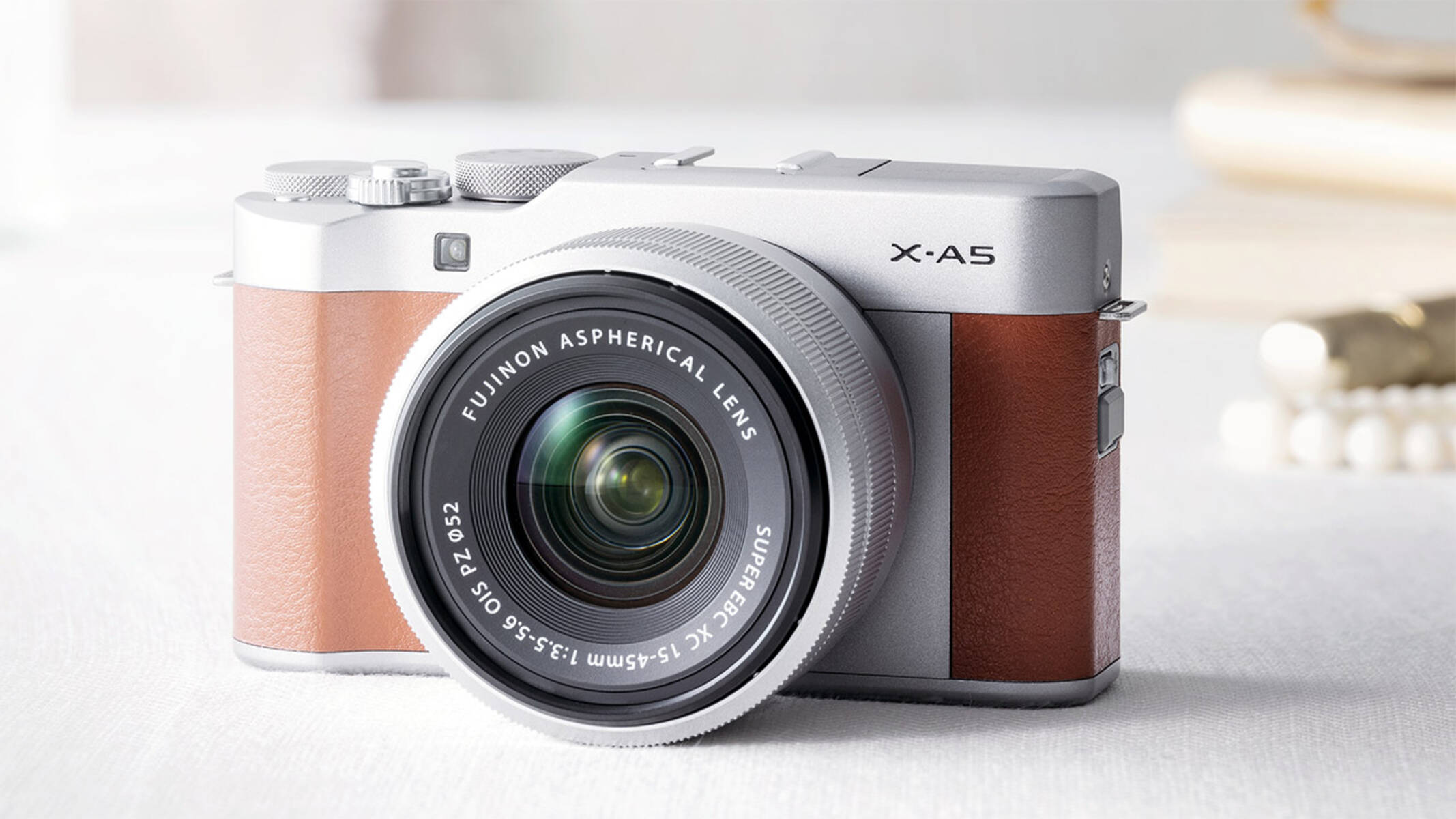Introduction
Mirrorless digital cameras have become increasingly popular in recent years, revolutionizing the way we capture and share photographs. With their compact size, advanced features, and versatility, mirrorless cameras offer a viable alternative to traditional DSLR cameras.
A mirrorless camera, as the name suggests, does not have a mirror mechanism that is typically found in DSLR cameras. This allows for a more compact and lightweight design, making mirrorless cameras highly portable and perfect for travel photography, street photography, and any situation where mobility is a priority.
Unlike DSLRs, mirrorless cameras use an electronic viewfinder (EVF) or a rear LCD screen to display a real-time preview of the image. This gives you a clear and accurate view of how the final image will look, allowing for more precise composition and adjustments.
One of the main advantages of mirrorless cameras is their ability to shoot silently. Since there is no mirror flipping up and down with each shot, mirrorless cameras are ideal for capturing images in quiet environments, such as during a wedding ceremony or while photographing wildlife without disturbing them.
In addition to their compact size and silent operation, mirrorless cameras also offer a wide range of advanced features. Many models come with in-body image stabilization (IBIS), which compensates for camera shake and allows you to take sharp photos even in low-light conditions without a tripod.
Furthermore, mirrorless cameras often have fast and accurate autofocus systems that make it easier to capture moving subjects. This is particularly beneficial for sports and wildlife photography, where speed and precision are crucial.
With the advancements in technology, mirrorless cameras now offer impressive image quality comparable to that of DSLR cameras. Their larger sensors, high-resolution capabilities, and advanced image processing algorithms ensure stunning detail and color reproduction in every shot.
Whether you are a professional photographer looking for a compact and versatile camera system or an enthusiast seeking high-quality images without the bulk, mirrorless cameras are the perfect choice. In the following sections, we will delve deeper into what exactly a mirrorless digital camera is, how it works, its advantages and disadvantages, and the key features to consider when choosing one.
Definition of Mirrorless Digital Camera
A mirrorless digital camera is a type of camera that does not have a reflex mirror, a key component found in traditional DSLR cameras. The absence of the mirror mechanism allows for a more compact and lightweight camera body, making mirrorless cameras highly portable and convenient for photographers on the go.
Unlike DSLRs, which use a mirror to reflect light into an optical viewfinder, mirrorless cameras rely on an electronic viewfinder (EVF) or a rear LCD screen to preview the image. The EVF displays a real-time image, showing exactly what the camera sensor sees. This technology allows for a more accurate representation of exposure, white balance, and any other camera settings that may affect the final image. It also provides the photographer with a preview of how the image will appear before they press the shutter button.
While mirrorless cameras do not have the optical viewfinder found in DSLRs, they compensate for this with a host of features and benefits. Many mirrorless cameras boast advanced autofocus systems, high-speed continuous shooting, and exceptional image quality. The image sensors used in mirrorless cameras are typically larger than those found in compact digital cameras, allowing for superior low-light performance and dynamic range.
Another defining feature of mirrorless cameras is the ability to interchange lenses. This allows photographers to use a wide range of lenses, from ultra-wide-angle to telephoto, to capture various subjects and achieve different creative effects. Additionally, many mirrorless cameras offer compatibility with lens adapters, allowing photographers to use lenses from different camera systems.
Overall, mirrorless digital cameras offer a compelling alternative to DSLRs for photographers of all levels. Their compact size, advanced features, and versatility make mirrorless cameras a popular choice for professionals, enthusiasts, and casual photographers alike.
How Does a Mirrorless Digital Camera Work?
A mirrorless digital camera operates on a different mechanism compared to a traditional DSLR camera. Instead of using a reflex mirror to redirect light into an optical viewfinder, a mirrorless camera relies on an electronic viewfinder (EVF) or a rear LCD screen to preview the image.
The absence of a mirror in a mirrorless camera allows for a more streamlined design. When you look through the electronic viewfinder or LCD screen, you are essentially viewing a digital representation of the image captured by the camera’s image sensor in real-time. This electronic preview offers several advantages over a traditional optical viewfinder.
One of the key advantages is the ability to see a comprehensive real-time preview of the image. The EVF or LCD screen shows the actual exposure, white balance, and any other camera settings that may impact the final image. This provides photographers with more accurate control over their composition and settings, making it easier to achieve the desired results.
Furthermore, mirrorless cameras often feature advanced autofocus systems that make use of the image sensor itself. This contrast-detection autofocus (CDAF) or phase-detection autofocus (PDAF) operates by analyzing the digital image captured by the sensor in real-time. This allows for faster and more precise autofocus performance, especially when tracking moving subjects.
When you press the shutter button on a mirrorless camera, the image sensor directly captures the light passing through the lens. This light is then converted into a digital signal and processed by the camera’s image processor. The processor applies various algorithms to enhance the image quality, reduce noise, and adjust settings based on the photographer’s preferences.
Because mirrorless cameras do not have a mirror mechanism, they are typically quieter during operation compared to DSLR cameras. This is particularly useful in situations where silence is essential, such as during a wedding ceremony or when photographing wildlife.
Overall, the combined technology of the electronic viewfinder, image sensor, and image processor in a mirrorless camera allows photographers to have a more interactive and dynamic shooting experience. The live preview, advanced autofocus, and direct image capture contribute to the appeal and functionality of mirrorless cameras.
Advantages of Mirrorless Digital Cameras
Mirrorless digital cameras offer several advantages over traditional DSLR cameras, making them increasingly popular among photographers of all levels. Let’s explore some of the key advantages of mirrorless cameras:
- Compact and Lightweight: One of the most significant advantages of mirrorless cameras is their compact size and lightweight design. The absence of a mirror mechanism allows for a smaller camera body, making mirrorless cameras highly portable and convenient for travel photography and street photography. They are also less bulky and easier to carry around for extended periods, reducing fatigue and strain on the photographer.
- Silent Operation: Mirrorless cameras operate silently as there is no mirror flipping up and down with each shot. This makes them ideal for situations where noise can be distracting or disruptive, such as during a wedding ceremony or when photographing wildlife. The silent shooting mode of mirrorless cameras allows photographers to capture candid moments without drawing unwanted attention.
- Real-Time Preview: With mirrorless cameras, photographers can see a real-time preview of the image through the electronic viewfinder (EVF) or the rear LCD screen. This provides an accurate representation of exposure, white balance, and other camera settings, allowing for more precise composition and adjustments. It eliminates the guesswork often associated with traditional optical viewfinders, where the final image may differ from what was seen in the viewfinder.
- Advanced Autofocus: Many mirrorless cameras boast advanced autofocus systems that utilize the image sensor itself. This allows for faster and more precise autofocus performance, especially when tracking moving subjects. The ability to capture sharp images of fast-moving action makes mirrorless cameras well-suited for sports, wildlife, and other dynamic photography genres.
- Superior Image Stabilization: Mirrorless cameras often come equipped with in-body image stabilization (IBIS), which compensates for camera shake. This feature allows photographers to take sharp photos even in low-light conditions without the need for a tripod. IBIS also benefits videographers by providing smooth and steady footage, reducing the reliance on external stabilization equipment.
- Wide Range of Lenses: Mirrorless cameras offer compatibility with various interchangeable lenses, allowing photographers to choose the lens that best suits their shooting needs. From wide-angle to telephoto, macro to tilt-shift, the versatility of lens options gives photographers creative freedom and allows them to adapt to different subjects and shooting styles. Furthermore, lens adapters are often available, enabling photographers to use lenses from different systems, further expanding their options.
These advantages make mirrorless digital cameras an attractive choice for photographers who value portability, versatility, and advanced features. Whether you are a professional seeking a more compact camera system or an enthusiast seeking high-quality images without the bulk, mirrorless cameras offer an excellent alternative to DSLR cameras.
Disadvantages of Mirrorless Digital Cameras
While mirrorless digital cameras offer numerous advantages, there are also some disadvantages that photographers should consider before making a purchase. Let’s explore some of the key drawbacks of mirrorless cameras:
- Shorter Battery Life: Due to their smaller size, mirrorless cameras tend to have smaller batteries compared to DSLRs. This results in shorter battery life, especially when using power-hungry features like continuous shooting or video recording. It is advisable to carry spare batteries or a portable charger when shooting for extended periods.
- Limited Lens Selection: Although mirrorless cameras have a growing selection of lenses available, the range may not be as extensive as that of DSLRs. This is especially true for specialized lenses or lenses from third-party manufacturers. However, the lens selection for mirrorless cameras is continually expanding, and many camera manufacturers offer adapters, allowing the use of DSLR lenses with mirrorless camera bodies.
- Reduced Ergonomics: The smaller size of mirrorless cameras can sometimes result in a less ergonomic design compared to DSLRs. The grip may be smaller, making it less comfortable to hold for extended periods, particularly if you have larger hands. However, this drawback varies among different camera models, and some mirrorless cameras now feature improved ergonomics with customizable buttons and grips.
- Overheating during Video Recording: Mirrorless cameras, especially those with higher video capabilities, can be prone to overheating during prolonged video recording. This is particularly noticeable when shooting in high-resolution or high-frame-rate formats. Some camera models have built-in heat management systems to mitigate this issue, but it is still something to be aware of, particularly if you plan to use a mirrorless camera primarily for video recording.
- Electronic Viewfinder Limitations: While electronic viewfinders (EVFs) offer real-time previews, they can sometimes be affected by lag or image stuttering, especially in low-light situations or when shooting fast-moving subjects. However, EVF technology has significantly improved in recent years, and many mirrorless cameras now feature high-resolution and low-latency EVFs that provide a smooth and responsive viewing experience.
- Higher Cost: Mirrorless cameras, especially those with advanced features and cutting-edge technology, often come with a higher price tag compared to entry-level DSLRs. This is partly due to the newer and more sophisticated technology used in mirrorless cameras. However, as the market for mirrorless cameras continues to expand, a wider range of price points and options are becoming available, making them more accessible to photographers with varying budgets.
Despite these disadvantages, mirrorless digital cameras have made significant advancements and continue to evolve, addressing many of these limitations. Careful consideration of your specific needs and shooting preferences can help determine whether the advantages of a mirrorless camera outweigh the disadvantages for your photography journey.
Key Features of Mirrorless Digital Cameras
Mirrorless digital cameras boast a range of key features that contribute to their popularity among photographers. These features enhance functionality, image quality, and overall shooting experience. Let’s explore some of the key features commonly found in mirrorless cameras:
- Electronic Viewfinder (EVF): Unlike optical viewfinders found in DSLRs, mirrorless cameras utilize an electronic viewfinder (EVF) or a rear LCD screen for live image previews. The EVF provides a digital representation of the image, allowing photographers to see the final exposure, white balance, and other settings in real-time. This real-time preview offers greater control over the composition and helps to eliminate exposure errors.
- In-body Image Stabilization (IBIS): Many mirrorless cameras feature in-body image stabilization (IBIS) systems, which compensate for camera shake. IBIS allows for sharper handheld shots and reduces the reliance on tripods in low-light or challenging shooting conditions. It is particularly beneficial when using lenses without built-in stabilization or when capturing video footage.
- Advanced Autofocus (AF) Systems: Mirrorless cameras often feature advanced autofocus systems, utilizing either contrast-detection autofocus (CDAF) or phase-detection autofocus (PDAF) or a combination of both. These systems offer fast and precise autofocus performance, even in challenging lighting conditions or when capturing moving subjects. Some models also include eye-detection autofocus, which ensures sharp focus on a subject’s eyes.
- High-resolution Image Sensors: Mirrorless cameras typically come equipped with larger image sensors compared to compact cameras, resulting in improved image quality, better low-light performance, and enhanced dynamic range. The larger sensors allow for higher pixel counts, which means more detail and the ability to make enlargements or crop images without significant loss of quality.
- High-speed Continuous Shooting: Mirrorless cameras excel in high-speed burst shooting, allowing photographers to capture fast action with precision. Many mirrorless models offer impressive continuous shooting rates, some exceeding 20 frames per second. This is especially advantageous for sports, wildlife, and other fast-paced photography genres.
- 4K Video Recording: Mirrorless cameras are renowned for their video capabilities, often supporting 4K and even higher resolutions. They often offer a range of frame rates, manual control options, and impressive autofocus for video recording. The ability to switch seamlessly between stills and video makes mirrorless cameras ideal for hybrid shooters.
- Customization Options: Mirrorless cameras often provide extensive customization options, allowing photographers to tailor the camera’s settings and controls to their preferences. This includes customizable buttons, dials, and menus, enabling quick access to frequently used functions and streamlining the shooting process.
- Wireless Connectivity: With built-in Wi-Fi and/or Bluetooth capabilities, mirrorless cameras make it easy to transfer images wirelessly to a smartphone, tablet, or computer. This allows for on-the-go image sharing, remote control of the camera, and seamless integration with various photography apps. Some mirrorless cameras also offer NFC (Near Field Communication) for quick and easy pairing with compatible devices.
These are just a few of the key features that make mirrorless digital cameras appealing to photographers. The constant innovation in mirrorless camera technology continues to introduce new features and functionalities, further enhancing the shooting experience and pushing the boundaries of what is possible in digital photography.
Types of Mirrorless Digital Cameras
Mirrorless digital cameras come in various types, each catering to different photography needs and preferences. Let’s explore the main types of mirrorless cameras available:
- Entry-Level Mirrorless Cameras: These are ideal for beginners or photographers on a budget who are looking to step up their photography game. Entry-level mirrorless cameras offer a balance of affordability, ease of use, and essential features. These cameras are user-friendly, often providing automatic shooting modes, simplified menus, and intuitive controls.
- Mid-Range Mirrorless Cameras: Positioned between entry-level and professional-grade cameras, mid-range mirrorless cameras offer a step up in terms of performance and capabilities. They typically have larger sensors, advanced autofocus systems, faster burst rates, and more manual control options. These cameras are suitable for enthusiasts who want to take their photography to the next level without breaking the bank.
- Professional Mirrorless Cameras: Designed for professional photographers who require the utmost performance, professional mirrorless cameras offer cutting-edge technology, exceptional image quality, and robust construction. They often have full-frame sensors, fast burst rates, extensive manual controls, and advanced video capabilities. These cameras excel in professional photography genres such as fashion, sports, and wildlife.
- Compact and Travel-friendly Mirrorless Cameras: These mirrorless cameras prioritize portability, making them perfect for travel photography and everyday use. They have compact bodies, lightweight construction, and often include features like in-body image stabilization (IBIS) and versatile zoom lenses. These cameras strike a balance between image quality and convenience, allowing photographers to capture moments on the go.
- High-resolution Mirrorless Cameras: These cameras are designed with image quality as the top priority. They feature high-resolution sensors, often with over 30 megapixels, delivering exceptional detail and clarity. These cameras are well-suited for landscape, studio, and architectural photography, where capturing the finest details is crucial.
- Video-focused Mirrorless Cameras: These mirrorless cameras prioritize video recording capabilities, offering high-quality video in addition to still photography. They support advanced video features like 4K recording, high frame rates, and professional video codecs. These cameras are popular among videographers, vloggers, and content creators who require versatile video capabilities in a compact form factor.
- Specialized Mirrorless Cameras: Some mirrorless cameras are designed with specific photography genres in mind. For example, there are mirrorless cameras dedicated to astrophotography, offering features like expanded ISO ranges and long exposure capabilities. There are also specialized mirrorless cameras for underwater photography, offering waterproof housing options and underwater shooting modes.
Each type of mirrorless camera caters to different photography styles, skill levels, and shooting requirements. Understanding the types of mirrorless cameras available can help you narrow down your options and choose the one that aligns with your specific needs and creative goals.
Comparison between Mirrorless and DSLR Cameras
Mirrorless cameras and DSLR cameras both have their strengths and weaknesses, and deciding between the two ultimately depends on your individual preferences and shooting requirements. Let’s compare these two popular camera types in terms of various factors:
- Size and Weight: Mirrorless cameras are generally more compact and lighter than DSLR cameras due to their lack of a mirror mechanism. This makes them more portable and convenient for travel or street photography.
- Optical Viewfinder vs. Electronic Viewfinder: DSLR cameras feature an optical viewfinder, which provides a direct and unadulterated view through the lens. Mirrorless cameras, however, use an electronic viewfinder (EVF) or a rear LCD screen for image preview. EVFs offer benefits like a real-time preview of exposure and settings, while optical viewfinders provide a natural and lag-free view.
- Autofocus Performance: Both mirrorless cameras and DSLR cameras have advanced autofocus systems, but DSLRs traditionally have faster and more accurate autofocus systems, especially when it comes to tracking moving subjects. However, mirrorless cameras are quickly catching up and many models now offer incredibly fast and precise autofocus capabilities.
- Battery Life: DSLR cameras typically have longer battery life compared to mirrorless cameras, thanks to their larger bodies and the ability to house bigger batteries. This can be advantageous for extended shooting sessions or when shooting in remote locations without access to charging facilities.
- Availability of Lenses: DSLR cameras have been around for a longer time, resulting in a more extensive selection of lenses from various manufacturers. However, mirrorless lens lineups are rapidly expanding, and many manufacturers offer lens adapters that allow the use of DSLR lenses on mirrorless camera bodies.
- Image Quality: Both mirrorless cameras and DSLR cameras can produce outstanding image quality, but differences may arise due to sensor size, image processing algorithms, and lens quality. Generally, DSLRs with their larger sensors have an advantage in low-light performance and dynamic range, while mirrorless cameras often excel in resolution and portability.
- Video Capabilities: Mirrorless cameras have gained popularity among videographers due to their advanced video features. Many mirrorless cameras offer 4K video recording, high frame rates, and advanced video autofocus, making them a preferred choice for videography and content creation.
- Price: Historically, DSLRs have had the advantage of being more affordable due to their longer presence in the market. However, as mirrorless technology advances and becomes more mainstream, a wider range of mirrorless cameras at different price points are now available, offering options for various budgets.
Ultimately, the choice between a mirrorless camera and a DSLR camera depends on your specific needs, shooting style, and personal preferences. Mirrorless cameras excel in portability, real-time preview, and video capabilities, while DSLRs have the advantage in autofocus performance, battery life, and lens availability. Consider your priorities and carefully evaluate which camera type aligns best with your photography requirements.
Popular Mirrorless Camera Brands
As mirrorless cameras have gained popularity, numerous camera manufacturers have entered the market with their own offerings. Let’s explore some of the most popular mirrorless camera brands known for their innovation and quality:
- Sony: Sony is one of the pioneering brands in the mirrorless camera market, offering a wide range of mirrorless cameras, from entry-level to professional-grade models. Sony mirrorless cameras are revered for their exceptional image quality, advanced autofocus systems, and high-speed continuous shooting capabilities. They are widely popular among both photographers and videographers.
- Fujifilm: Fujifilm has established itself as a prominent player in the mirrorless camera industry with its retro-inspired designs and outstanding image quality. Fujifilm cameras incorporate film simulations to replicate the nostalgic look of classic film stocks. They are known for their exceptional image processing algorithms, high-resolution sensors, and a vast selection of lenses to cater to various photography genres.
- Panasonic: Panasonic offers a range of mirrorless cameras renowned for their video capabilities. Panasonic Lumix mirrorless cameras feature advanced 4K video recording, high frame rates, and professional video features. They also excel in low-light performance, image stabilization, and versatile shooting modes, making them popular among vloggers, videographers, and hybrid shooters.
- Olympus: Olympus has a strong presence in the mirrorless camera market, particularly in the Micro Four Thirds system. Olympus cameras are known for their compact size, robust build quality, and in-body image stabilization (IBIS) systems. They offer a wide range of lenses and are favored by outdoor and travel photographers due to their ruggedness and weather-sealing.
- Nikon: Nikon, a giant in the DSLR market, has also ventured into the mirrorless arena with its Nikon Z series. Nikon mirrorless cameras combine Nikon’s renowned image quality and lens technology with the advantages of mirrorless technology. They offer excellent low-light performance, advanced autofocus, and compatibility with their extensive range of F-mount lenses through an adapter.
- Canon: Canon, another leading DSLR manufacturer, has introduced its mirrorless camera lineup with the Canon EOS R series. Canon mirrorless cameras are known for their superb image quality, intuitive controls, and versatile shooting modes. They offer a range of lenses specifically designed for the RF mount, as well as compatibility with existing EF and EF-S lenses.
These are just a few of the popular mirrorless camera brands that have made a significant impact on the market. Each brand brings its own unique technologies, lens ecosystems, and aesthetics to their mirrorless camera systems, catering to the diverse needs of photographers.
When considering a mirrorless camera, it’s essential to research and compare the offerings from different brands to find the one that aligns best with your shooting style, preferences, and budget.
Tips for Choosing a Mirrorless Digital Camera
Choosing the right mirrorless digital camera can be an exciting but challenging task, given the wide range of options available. Here are some essential tips to help you make an informed decision:
- Identify Your Photography Needs: Consider the types of photography you will be primarily engaged in. Are you interested in travel photography, portrait photography, or sports photography? Understanding your specific needs will help you narrow down the features and capabilities required in a mirrorless camera.
- Determine Your Budget: Set a budget range that aligns with your financial capacity and the level of camera you are seeking. Mirrorless cameras can vary significantly in price, with entry-level models being more budget-friendly, while professional-grade models can be quite expensive. Make sure to also consider the cost of additional lenses and accessories.
- Consider Image Sensor Size: Mirrorless cameras come with different sensor sizes, ranging from Micro Four Thirds to APS-C and full-frame. Larger sensors generally offer better low-light performance, greater dynamic range, and wider field of view, but they may also come at a higher cost. Choose a sensor size that suits your photography style and budget.
- Evaluate Autofocus Performance: Look for a camera with advanced autofocus systems, such as hybrid or phase-detection autofocus (PDAF). Consider the number of autofocus points, their coverage, and the camera’s ability to track moving subjects. This is crucial, particularly if you plan to shoot fast-moving action or wildlife.
- Consider Lens Compatibility: Check the availability of lenses for the camera brand and mount you are considering. Research the range of lenses offered by the manufacturer and the compatibility with third-party lens manufacturers. Ensure that the lens selection is sufficient to meet your current and future photography needs.
- Try Before You Buy: Visit a camera store and get hands-on experience with different mirrorless cameras. Test the ergonomics, button placement, and menu system to see if they feel intuitive and comfortable to use. Pay attention to the camera’s weight and form factor to ensure it suits your shooting style and preferences.
- Read Reviews and User Feedback: Before making a final decision, read online reviews, user feedback, and expert opinions about the cameras you are considering. This can provide valuable insights into the camera’s performance, image quality, and real-world usability.
- Consider Video Capabilities: If you are interested in videography or content creation, evaluate the camera’s video features, including resolution, frame rates, and video autofocus. Look for cameras that offer advanced video capabilities, such as 4K recording and external microphone input, depending on your specific video requirements.
- Check Connectivity and Features: Consider the camera’s connectivity options, such as built-in Wi-Fi, Bluetooth, or NFC, which allow for easy image transfer and remote shooting. Additionally, evaluate other features like in-body image stabilization (IBIS), weather-sealing, touchscreen functionality, and customizable controls, depending on your shooting preferences.
- Consider Future Expansion: Think about your potential future needs as you progress in your photography journey. Ensure that the camera system you choose allows for future expansion, such as additional lenses, accessories, and compatibility with emerging technologies.
By considering these tips and doing thorough research, you can find a mirrorless digital camera that suits your photography needs, budget, and shooting style. Remember that no camera is perfect, and it’s important to prioritize features that are most essential to you as a photographer.
Conclusion
Mirrorless digital cameras have reshaped the photography landscape with their compact size, advanced features, and impressive image quality. They offer a viable alternative to traditional DSLR cameras, appealing to both professional photographers and enthusiasts alike.
With their compact and lightweight design, mirrorless cameras are highly portable, making them ideal for on-the-go photography, travel, and street photography. The use of electronic viewfinders provides real-time previews, allowing for accurate exposure and composition adjustments, while advanced autofocus systems capture fast-moving subjects with precision.
While mirrorless cameras offer numerous advantages, it’s important to consider their potential drawbacks. Factors such as shorter battery life, limited lens selection, and potential overheating during prolonged video recording should be taken into account when making a decision.
When choosing a mirrorless camera, consider your specific photography needs, determine your budget, and evaluate factors like image sensor size, autofocus performance, lens compatibility, and additional features like video capabilities and connectivity options. It can be helpful to try out different camera models in person and read reviews and feedback from experts and other photographers.
There are several reputable mirrorless camera brands to choose from, including Sony, Fujifilm, Panasonic, Olympus, Nikon, and Canon, each offering their own unique features, lens ecosystems, and aesthetics. Research and compare the offerings from different brands to find the camera that best suits your preferences and shooting style.
Ultimately, the right mirrorless camera is the one that empowers you to capture stunning images, pursue your creative vision, and enhance your photography experience. Whether you are a professional seeking a compact, high-performance camera system or an enthusiast looking to explore new photographic possibilities, a well-chosen mirrorless digital camera can be your perfect companion on your photographic journey.







